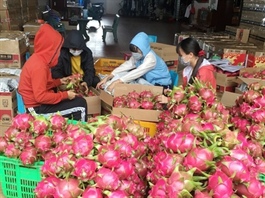70,000 garment and textiles job cuts since January
70,000 garment and textiles job cuts since January
According to a report of the Ministry of Labour, Invalids and Social Affairs (MoLISA) released on June 5, workers in the garment and textile sector suffered the most from a series of job cuts in the first five months of this year, with 70,000 workers losing their jobs and 66,600 having their working hours reduced.

According to the MoLISA, the number of employees in Vietnam affected by the surge of employment cuts in the first five months of 2023 was approximately 510,000, of which 280,000 were laid off.
Vu Duc Giang, president of the Vietnam Textile and Apparel Association (VITAS), stated that the mass lay-offs occurred due to a lack of orders. "Many businesses have a large quantity of non-exportable inventory, while new orders are unavailable," said Giang.
According to Giang, the current period is challenging not only for the local garment and textile industry, but also for the global market as a result of the abrupt decline in worldwide demand caused by the global economic downturn. Since the beginning of the third quarter of 2022 to the present, a significant number of businesses in the industry have observed a precipitous decline in orders.
"Textile companies are making every effort to reduce production costs to retain their workforce," Giang stated. He is concerned that cheap labour will no longer be a competitive advantage for Vietnam's garment and textile producers in the near future.
According to VITAS, the export value of companies in the sector in the first quarter of 2023 exceeded $5.8 billion, and it is estimated that export turnover in April reached another $3 billion. This year's target for the industry is $47 billion.
Than Duc Viet, general director of Garment 10 JSC (Garco10), reported that the order situation saw no significant improvement between the second and third quarters of this year. Orders for Garco10 fell by around 25 per cent in Q2 compared to Q1. "At this time of year, there is typically information about orders for the third quarter, but this year is something else," Viet said.
Before placing orders, he stated that partners are monitoring market signals and inventory levels.
VITAS reported that during Q1 this year, the majority of businesses saw a reduction in orders between 30 and 40 per cent as a result of high inflation in import markets, prompting consumers to begin saving money and reduce consumption of superfluous products. In the meantime, rising energy prices have driven up production costs, adding to the challenges already being faced by businesses.
According to a report by Vietnam National Textile and Garment Group, the world's total demand for clothing products in the event of a global economic downturn is projected to be around $700 billion, lower than in 2020, when protective clothing was no longer required due to the Covid-19 epidemic. In the event that the global economy enters a recession, however, the total demand for textiles and apparel will decline by approximately 13 per cent, or $100 billion, from 2022 levels.

























